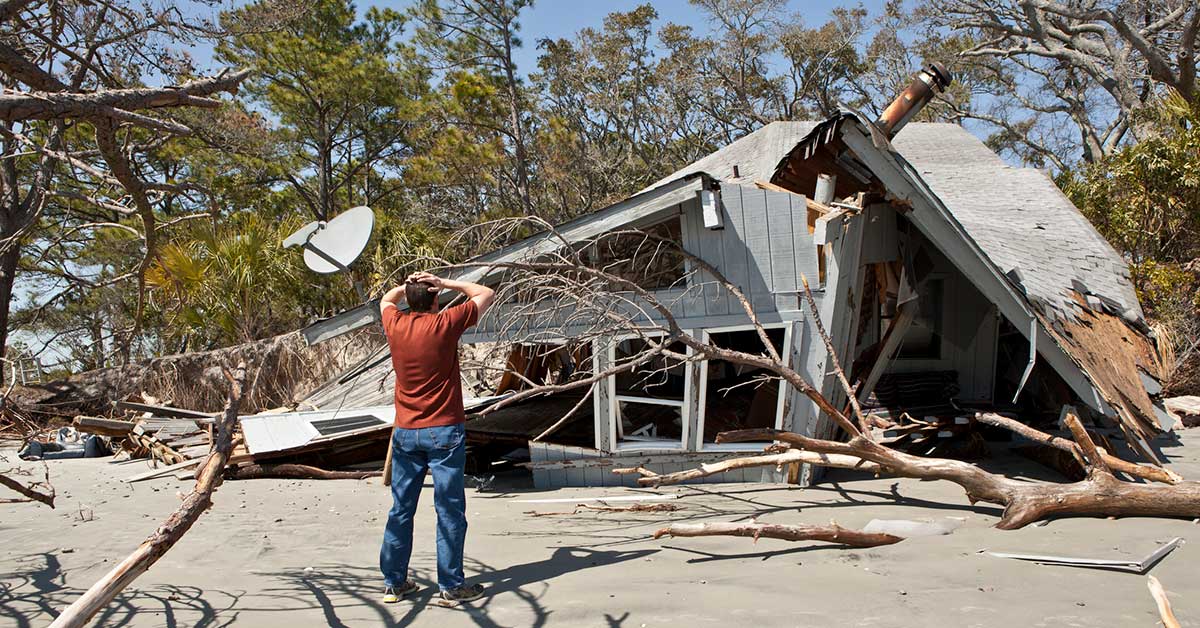
Rise of the Disaster Investor
Hurricanes. Tornados. Floods. Wildfires. They drastically alter the lives of thousands of property owners. The destruction they cause is onerous. Those affected are often overwhelmed as they have to pick up the pieces.
And then there are those who look to profit off this misfortune.
Some might call these opportunists exploitive. Some might call them vultures. And while they would rather be called “disaster investors,” despite the negative reputation they may have, these people feel like they are helping communities that were damaged by these natural disasters.
First off, they are assuming all financial risk by buying up damaged or destroyed property. There’s no guarantee they could salvage a property or even flip a lot if everything that was pre-existing had to be razed.
To be fair to them, once they do invest in these properties, the money they are putting into the properties do help rebuild communities, especially when many other lenders or developers shy away from the risk.
And if it seems these investors are coming out of the woodwork, they are.
Natural Disasters have spiked in recent years. According to the Wall Street Journal, data culled from the National Centers for Environmental Information, the top four years since 1980 that had more than $1 billion in damage caused by natural disasters were 2017, 2011, 2016 and 2018.
A majority of these disasters happen in the same geographic locations in the U.S. – Across the Southeast and in California. Not coincidentally, these areas tend to have dense populations and the home prices are rising quickly.
Uninsured property owners who are victims of these disasters almost always are forced to sell because the cost to rebuild is too exorbitant.
Even those who have insurance often choose to sell rather than rebuild.
And that’s when the disaster investors swoop in – and it looks like they may be helping.
According to the Wall Street Journal property sales in some areas affected by natural disasters went up in the months following the devastation.
In 2017, a wildfire ravaged Santa Rosa, Calif. to the tune of $1.2 billion in economic damage. Yet, in the five months after the fire, home sales in Santa Rosa spiked by 17 percent. The Wall Street Journal also indicated that places impacted by Hurricane Michael in 2018 – like Panama City, Fla., have also seen increases in home sales.
Additionally, the report indicated that that sales are up in commercial property sales.
Many of these disaster investors are also the same folks who benefited on home foreclosures a decade ago during the subprime mortgage crisis – which is another reason people are reluctant to trust them.
There are people who believe these disaster investors take advantage of the vulnerable, make lowball offers and then once they’ve dug their claws into the community, change the character of it by attracting outsiders through building bigger on those properties.
But these investors aren’t going away. In fact, there are more now than ever before. With the concerning increase in frequency of these natural disasters this decade – and an expectation that there may be even more in the future — anti-disaster investor folks are likely going to have to accept this kind of property transaction as the norm, not just a trend.
Time to Focus on Affordable Housing
Taxes on real estate are not the answer. Sign the petition calling on Congress to address our country’s housing shortage.





